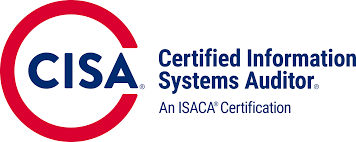Mục tiêu khóa học:
- Cung cấp các kiến thức nền tảng, cần thiết nhất phục vụ cho quá trình kiểm toán hệ thống thông tin của tổ chức / doanh nghiệp.
- Các bước xây dựng kế hoạch kiểm toán, các phương pháp xây dựng và đánh giá rủi ro, các tiêu chuẩn, quy định, quy trình kiểm toán và đề nghị các kiểm soát cần thiết.
- Các mô hình phát triển, Framework tham chiếu đến các hoạt động quản trị hệ thống và hạ tầng.
- Đánh giá các dịch vụ dựa trên công nghệ thông tin và sự hỗ trợ.
Đối tượng tham gia khóa học:
- Khóa học dành cho những người đang làm về kiểm toán hệ thống thông tin, các nhà quản trị hoặc kiểm toán nội bộ của doanh nghiệp.
Nội dung khóa học:
Domain 1 — Information System Auditing Process
- Plan an audit to determine whether information systems are protected, controlled, and provide value to the organization.
- Conduct an audit in accordance with IS audit standards and a risk-based IS audit strategy.
- Communicate audit progress, findings, results and recommendations to stakeholders.
- Conduct audit follow-up to evaluate whether risk has been sufficiently addressed.
- Evaluate IT management and monitoring of controls.
- Utilize data analytics tools to streamline audit processes.
- Provide consulting services and guidance to the organization in order to improve the quality and control of information systems.
- Identify opportunities for process improvement in the organization’s IT policies and practices.
Domain 2 – Governance & Management of IT
- Evaluate the IT strategy for alignment with the organization’s strategies and objectives.
- Evaluate the effectiveness of IT governance structure and IT organizational structure.
- Evaluate the organization’s management of IT policies and practices.
- Evaluate the organization’s IT policies and practices for compliance with regulatory and legal requirements.
- Evaluate IT resource and portfolio management for alignment with the organization’s strategies and objectives.
- Evaluate the organization’s risk management policies and practices.
- Evaluate IT management and monitoring of controls.
- Evaluate the monitoring and reporting of IT key performance indicators (KPIs).
- Evaluate whether IT supplier selection and contract management processes align with business requirements.
- Evaluate whether IT service management practices align with business requirements.
- Conduct periodic review of information systems and enterprise architecture.
- Evaluate data governance policies and practices.
- Evaluate the information security program to determine its effectiveness and alignment with the organization’s strategies and objectives.
- Evaluate potential opportunities and threats associated with emerging technologies, regulations, and industry practices
Domain 3 – Information Systems Acquisition, Development, & Implementation
- Evaluate whether the business case for proposed changes to information systems meet business objectives.
- Evaluate the organization’s project management policies and practices.
- Evaluate controls at all stages of the information systems development life cycle.
- Evaluate the readiness of information systems for implementation and migration into production.
- Conduct post-implementation review of systems to determine whether project deliverables, controls and requirements are met.
- Evaluate change, configuration, release, and patch management policies and practices.
Domain 4 – Information Systems Operations and Business Resilience
- Evaluate the organization’s ability to continue business operations.
- Evaluate whether IT service management practices align with business requirements.
- Conduct periodic review of information systems and enterprise architecture.
- Evaluate IT operations to determine whether they are controlled effectively and continue to support the organization’s objectives.
- Evaluate IT maintenance practices to determine whether they are controlled effectively and continue to support the organization’s objectives.
- Evaluate database management practices.
- Evaluate data governance policies and practices.
- Evaluate problem and incident management policies and practices.
- Evaluate change, configuration, release, and patch management policies and practices.
- Evaluate end-user computing to determine whether the processes are effectively controlled.
Domain 5 – Protection of Information Assets
- Conduct audit in accordance with IS audit standards and a risk-based IS audit strategy.
- Evaluate problem and incident management policies and practices.
- Evaluate the organization’s information security and privacy policies and practices.
- Evaluate physical and environmental controls to determine whether information assets are adequately safeguarded.
- Evaluate logical security controls to verify the confidentiality, integrity, and availability of information.
- Evaluate data classification practices for alignment with the organization’s policies and applicable external requirements.
- Evaluate policies and practices related to asset life cycle management.
- Evaluate the information security program to determine its effectiveness and alignment with the organization’s strategies and objectives.
- Perform technical security testing to identify potential threats and vulnerabilities.
- Evaluate potential opportunities and threats associated with emerging technologies, regulations, and industry practices.



